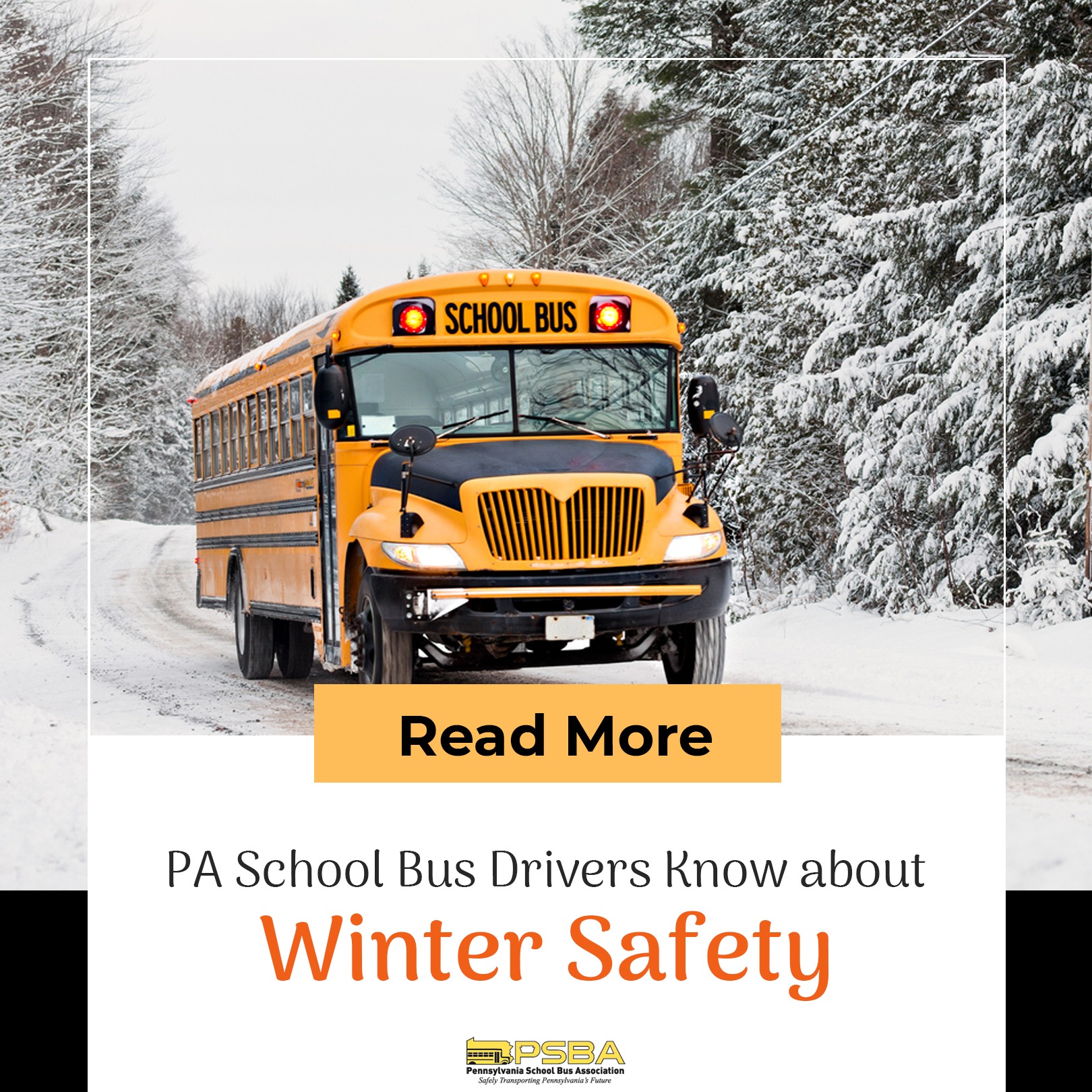When it comes to going to and from school, the safety of the students is of utmost concern to the school administration and parents. Safety is also the top priority of PA school bus drivers in charge of the students on board.
Thank heavens for school buses, which remain the safest mode of transportation for students to go to and from school. While some children get to school by walking, cycling, or getting dropped off by parents in their vehicles, millions of other children ride the school bus.
But how about driving the students to school on a winter day? As school bus drivers, you want the proper information you need to get yourself and your vehicle ready as the cold season approaches.
While driving in the winter seems idyllic – not to mention that the children are getting excited about the first snowfall – driving a school bus in inclement weather poses some considerable challenges. Freezing temperatures can be nasty as they might affect the working condition of the vehicle or distract the driver from the task at hand. Therefore, drivers can’t take winter lightly.
Driving a school bus can be stressful. But driving a school bus in inclement weather can make a tough job even more difficult. In this case, safety should be improved a lot more. The right preparation will help reduce the stress on the part of the driver. With specialized driving training for the winter and well-equipped and well-maintained school buses, the driver can focus on their job better. Applying a few solutions and strategies will also help improve driving performance in poor and challenging conditions.
If you are a school bus driver, check out the following tips to help keep yourself, your vehicle, the students, and the public safe this winter season.
- Anticipate the weather conditions – Never wait until the last minute to pay attention to the weather. You should know beforehand what to expect and react accordingly to keep yourself, the students, commuters, and other drivers safe, especially during the winter. Decide whether you feel safe driving in the snow or ice. Develop alternate or snow routes and set earlier-than-usual start times to get you and the students where you need to go.
- Put on appropriate clothing – Wear hats, gloves, shoes or boots with high traction, and other winter clothing that will keep you warm. When you stay warm, you stay focused on the road better.
- Prepare your vehicle for winter conditions – Prepare your vehicle even before the winter season begins. Make sure that the bus is equipped for inclement weather by doing the following:
- Inspect all tires and make sure they have sufficient tread or snow tires for switching.
- Install new windshield wipers
- Test all batteries
- Ensure that all lights are working
- Add brake line antifreeze.
- Apply a rain repellent on the exterior glass surface to prevent snow or rain from sticking.
- Apply an anti-fog material on mirrors and interior glass surfaces.
- Keep oil absorbent or cat litter for emergency traction.
- Do a pre-winter check on your vehicle – Complete the following tasks during your pre-trip inspection:
- Keep windows, lights, and mirrors free from snow and ice buildup.
- Check the wiper blades.
- Check washer fluid levels.
- Ensure that the tires are properly inflated.
- Maintain your vehicle’s fuel level as full as possible.
- Check for road and weather conditions.
- Know your laws and follow them – Know and observe your state’s laws about speed limits and general safety for school buses.
- Drive slowly and carefully – Remember that students rely on you to safely take them to and from school. In this case, keeping everyone on board safe is more important than arriving on schedule. Don’t drive recklessly on main roads and highways, even if motorists around you drive fast. If weather conditions are bad, drive below the speed limit at a safe and comfortable rate. Pay attention to other cautions and warnings in school zones, bus stops, and loading zones.
- Employ safe driving methods based on specific areas and conditions – Be on the defensive and stay alert for anything that can happen around you. Reduce your low beam setting when driving in fog, keep moving in the snow to prevent a slip, and remember that bridges and overpasses usually get frozen before other driving surfaces. Plan your driving decisions based on the current conditions. Also, if you feel that a specific area looks unsafe to pass, avoid it.
When it comes to driving a school bus in the winter, don’t take chances. Bus drivers know how to handle snowy weather and understand safety behind the wheel should be at the top of their minds. Follow the tips above to ensure everyone on board and around you is safe during the winter season.
If you are looking for a new job opportunity, how about becoming one of the PA school bus drivers and a significant part of your community? Go to https://schoolbushero.com/jobs to learn more.

